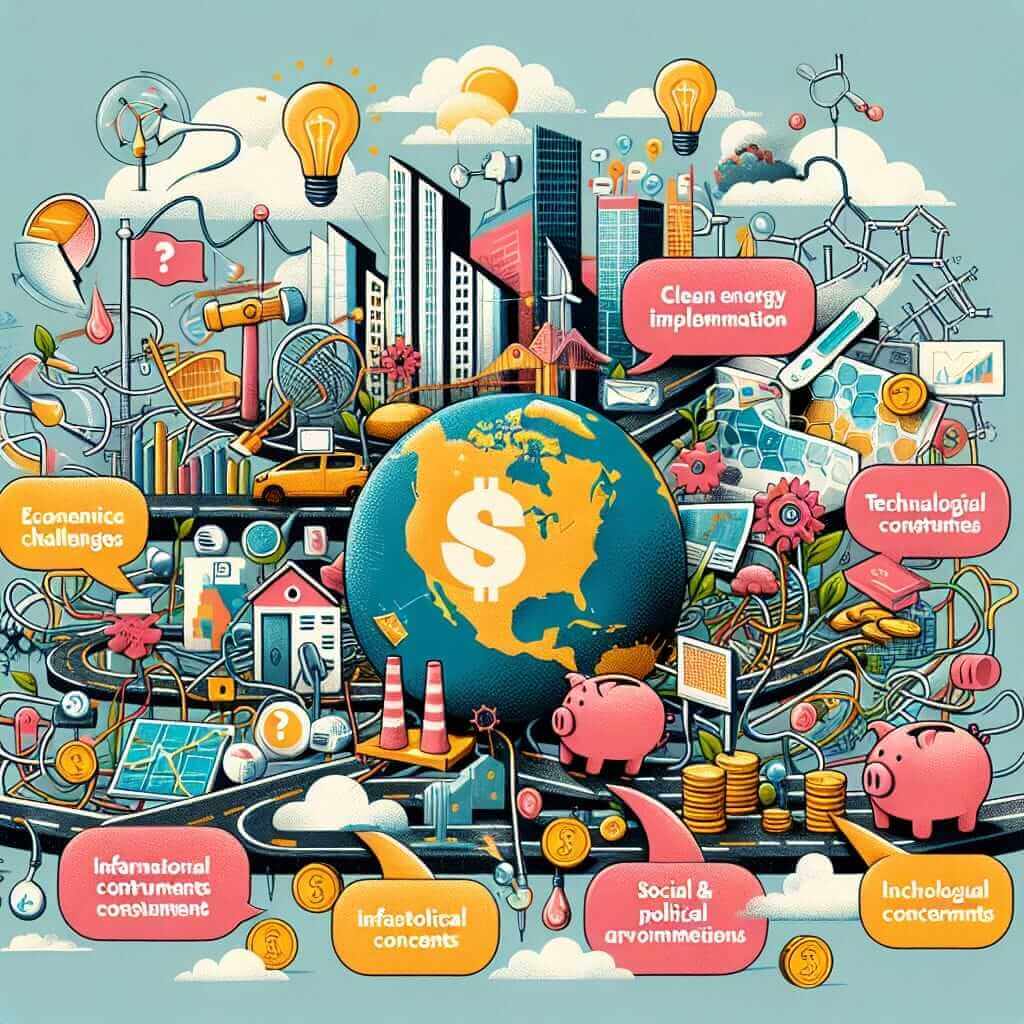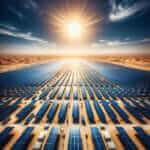The IELTS Reading section requires candidates to read passages and answer questions related to those passages. One of the common themes that can appear in the Reading section is related to global issues such as the challenges of achieving universal access to clean energy. This topic is not only relevant but also contemporary, making it a theme that the IELTS testing body might frequently explore. It involves understanding complex concepts, global initiatives, and the barriers that prevent universal access to clean energy. In this article, we will provide a detailed reading practice focused on this topic to help you enhance your IELTS Reading skills and prepare for similar themes that may appear in the exam.
Reading Passage
Achieving Universal Access to Clean Energy
Achieving universal access to clean energy is a critical goal for sustainable development and poverty eradication. Despite significant advancements, numerous challenges still impede this objective. This passage explores these challenges in depth.
Economic Barriers
One of the foremost challenges is the economic barrier. The initial costs of setting up clean energy systems, such as solar, wind, or hydroelectric power, can be prohibitively high. Many developing countries, where the need for clean energy is most urgent, lack the financial resources to invest in these technologies. Moreover, the maintenance and operational costs need stable economic conditions, which are often absent in these regions.
Technological Challenges
Technological barriers also play a significant role. The availability of advanced technology for harnessing renewable energy is limited in less developed regions. There’s a significant gap between the technology available in developed and developing countries. Bridging this gap requires substantial investment in research and development, along with knowledge transfer, which is not always feasible.
Infrastructure Constraints
Another major challenge is inadequate infrastructure. Clean energy systems require substantial infrastructure support, like grid systems to distribute electricity. Many rural and remote areas lack basic infrastructure, making it difficult to implement clean energy solutions effectively. The absence of a reliable grid system can lead to energy losses and inefficiencies, further complicating the problem.
Social and Political Barriers
Social and political barriers can also hinder the progress towards universal clean energy access. Government policies play a crucial role in determining the viability of clean energy projects. In many countries, there is a lack of political will to prioritize clean energy. Additionally, there is resistance from established fossil fuel industries, which can lobby against renewable energy initiatives. Socially, there are challenges related to public acceptance and awareness. Educating the masses about the benefits of clean energy and changing consumption patterns are essential but challenging tasks.
Environmental Concerns
While clean energy is more environmentally friendly compared to fossil fuels, it is not without its drawbacks. Hydroelectric projects, for example, can lead to ecological disruptions and displacement of communities. Wind turbines and solar farms require large tracts of land, which can lead to land use conflicts. Thus, it is essential to balance the environmental impacts while expanding clean energy infrastructure.
Financial Mechanisms
Finally, there is a need for effective financial mechanisms to support clean energy projects. International financial institutions and governments must collaborate to create funding opportunities that can mitigate the high initial costs and economic uncertainties associated with renewable energy projects.
 Challenges and possible solutions of implementing clean energy
Challenges and possible solutions of implementing clean energy
Questions
Multiple Choice
-
What is one of the main economic barriers to achieving universal access to clean energy?
- a. Lack of technological innovation
- b. High initial costs of setting up clean energy systems
- c. Insufficient public awareness
- d. Government corruption
-
Which type of barrier involves difficulties with infrastructure support?
- a. Economic Barrier
- b. Technological Barrier
- c. Infrastructure Constraint
- d. Social Barrier
True/False/Not Given
-
The maintenance and operational costs of clean energy systems require stable economic conditions. (True/False/Not Given)
-
Developed and developing countries have equal access to advanced renewable technology. (True/False/Not Given)
Matching Information
-
Match the following barriers with their descriptions:
- a. Technological Challenges
- b. Social and Political Barriers
- c. Environmental Concerns
- d. Financial Mechanisms
i. Involves public acceptance and government policies
ii. Requires international collaboration for funding
iii. Related to land use conflicts and ecological disruptions
iv. Gap in technology availability between countries
Summary Completion
-
Complete the summary using the words in the box below:
“One of the foremost challenges is the (a) barrier. The initial costs of setting up clean energy systems can be prohibitively high. Other significant barriers include technological, infrastructure, social and political, and (b) concerns. To overcome these barriers, international financial institutions and governments must create effective (c) mechanisms.”
Words: environmental, economic, financial, technological
Answers
- b. High initial costs of setting up clean energy systems
- c. Infrastructure Constraint
- True
- False
-
- a. iv. Gap in technology availability between countries
- b. i. Involves public acceptance and government policies
- c. iii. Related to land use conflicts and ecological disruptions
- d. ii. Requires international collaboration for funding
-
- (a) economic
- (b) environmental
- (c) financial
Common Mistakes
- Misinterpreting Questions: Candidates often misinterpret True/False/Not Given questions. Ensure the statement given exactly matches the information in the passage before marking as True or False, and if it is not mentioned at all, choose Not Given.
- Matching Heading Misunderstanding: While matching headings, look for the main idea of the paragraph rather than focusing on specific details.
- Summary Completion Errors: In summary completion, always use words from the box provided. Students often lose marks by writing synonyms or incorrect forms of the word.
- Multiple Choices Confusion: For multiple-choice questions, read all options carefully and choose the most appropriate one based on the passage.
Vocabulary
- Prohibitively (adverb): /prəˈhɪbɪtɪvli/ – excessively, to the extent of preventing usage.
- Feasible (adjective): /ˈfiːzəbl/ – possible to do easily or conveniently.
- Ecological (adjective): /ˌiːkəˈlɒdʒɪk(ə)l/ – relating to the relationship between living organisms and their environment.
Grammar Focus
-
Relative Clauses: Used to provide additional information about the subject.
- Example: “The initial costs of setting up clean energy systems, which can be prohibitively high, are a significant barrier.”
-
Passive Voice: Used to emphasize the action rather than the subject performing the action.
- Example: “Hydroelectric projects can lead to ecological disruptions and displacement of communities.”
Conclusion
Achieving a high score in the IELTS Reading section requires practice and familiarity with different types of questions. This passage on the challenges of achieving universal access to clean energy is a relevant and contemporary topic that may appear in the exam. Remember to read the passage carefully, understand the context, and apply the strategies discussed in this article to enhance your performance in the IELTS Reading section.


